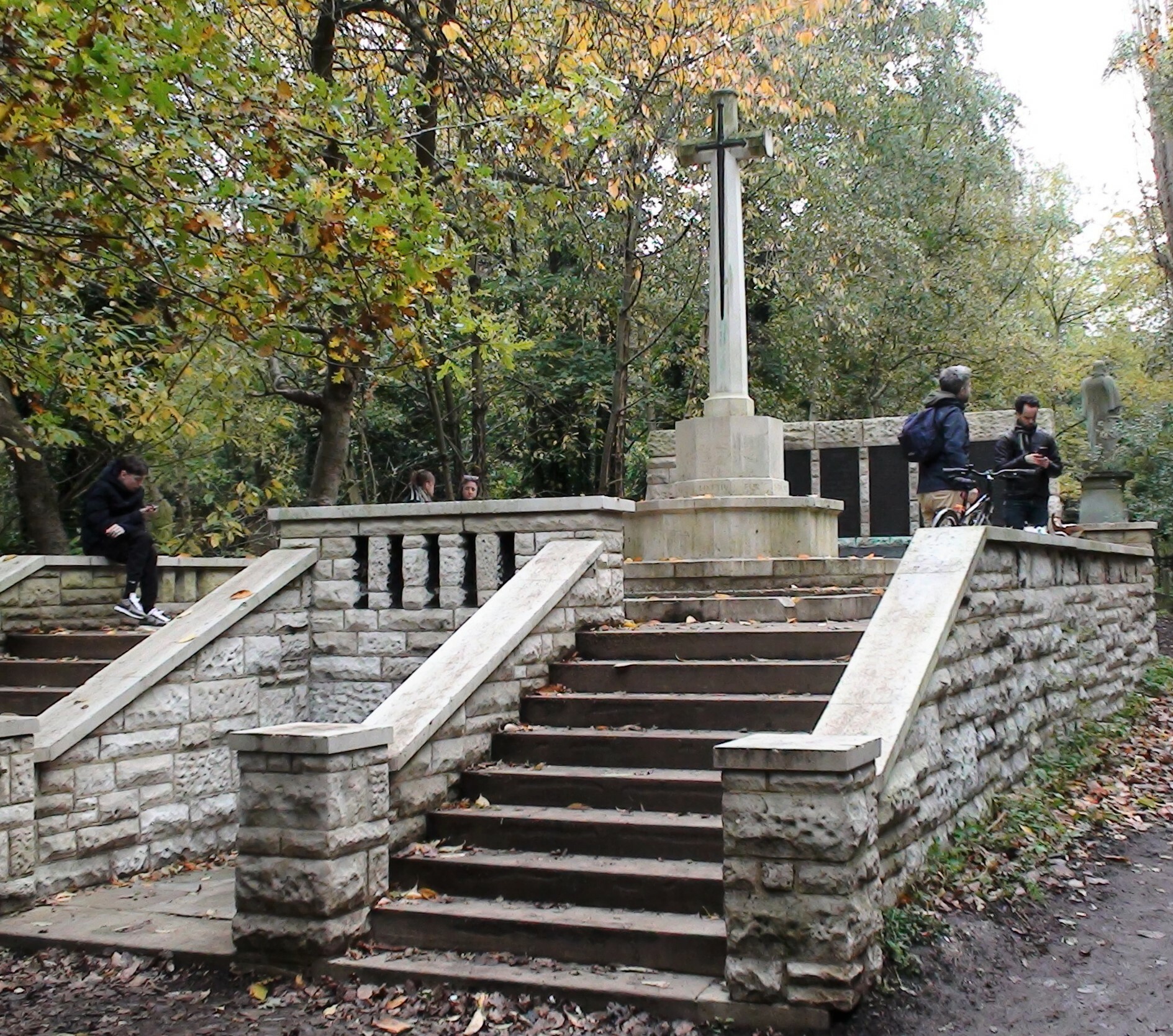Site: Abney Park - CWGC war memorial (1 memorial)
N16, Abney Park Cemetery
The Commonwealth war graves commission lists 377 in this cemetery some on this screen wall but others not.
From Virtual War Memorial Australia "There are 258 Commonwealth burials of the 1914-1918 war and a further 113 of the 1939-1945 war here. {=371} Those whose graves could not be marked by individual headstones are recorded by name on a Screen Wall memorial near the Cross of Sacrifice towards the centre of the cemetery, opposite the chapel."
From Abney Park 1: "... new graves were still discovered ... the last noted being in 2012.... Abney Park is the place of internment for 377 service personnel from both WWI and WWII. 151 are buried in graves with a CWGC headstone (sometimes mentioned on, or with a private grave headstone as well) and 226 are buried in unmarked graves within the cemetery - these people are listed on the screen walls of the central Commonwealth War Memorial, adjacent to the chapel."
From Abney Park 2: "Built over the catacomb vaults below, the Commonwealth War Memorial was completed during 1925. ... The Cross of Sacrifice was designed by architect Sir Reginald Blomfield in 1919. The War Memorial was built to commemorate those servicemen buried in various parts of Abney Park whose graves could not be marked by individual headstones. There are 375 fallen personnel interred in Abney Park, 262 burials from the 1914 - 1918 Great War and a further 113 of the 1939 - 1945 Second World War. {=375} Since being extended after WWII, the bronze screen wall panels bear the names of 220 soldiers and sailors. The main body of the memorial is constructed from 12" thick Portland stone, the parapet is paved with 4" thick York stone and the steps are a distinctive Woodkirk stone. In the early days a formal shrub bed was laid between the Cross and the raised landing edges. This was still evident in a picture published in the 1994 printing of the book 'A Guide to Abney Park Cemetery' by Paul Joyce. As there is no record, we are unsure as to when they were removed."
The Wikipedia Talk page for this memorial is interesting: "I am rewriting the first paragraph of this section to reflect the description given in the CWGC's website. The memorial is not a local community war memorial to those from the area who were killed, but one commonly erected by the CWGC in major city cemeteries to list servicemen buried in the cemetery whose graves could not be headstoned. These need not have been men from the area but those from beyond who died stationed in that area or in local military hospitals. Neither is it correct to term them killed in action as for most of the both World Wars those killed on operations abroad were not repatriated for burial in their home country. Those buried in such a cemetery in the UK would have died of effects of wounds, illnesses, accidents or even suicides. (Airmen killed engaging enemy planes such as during Battle of Britain, over Britain, could be classed as killed in action.)"






